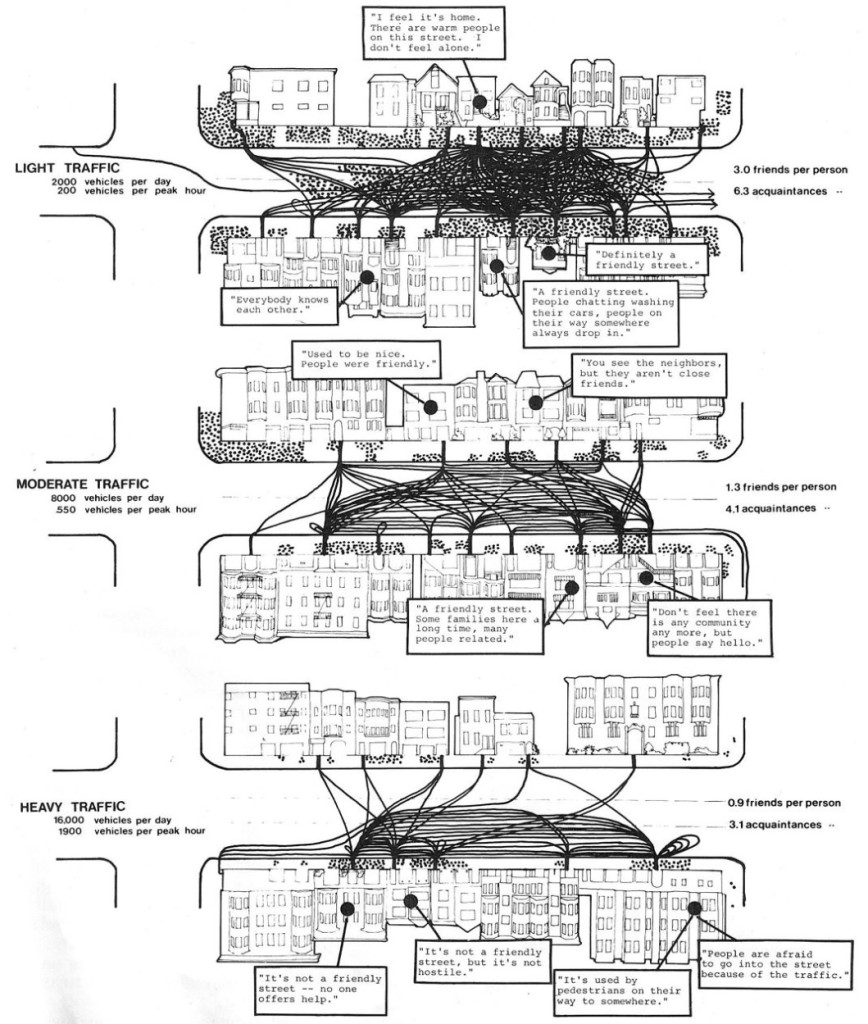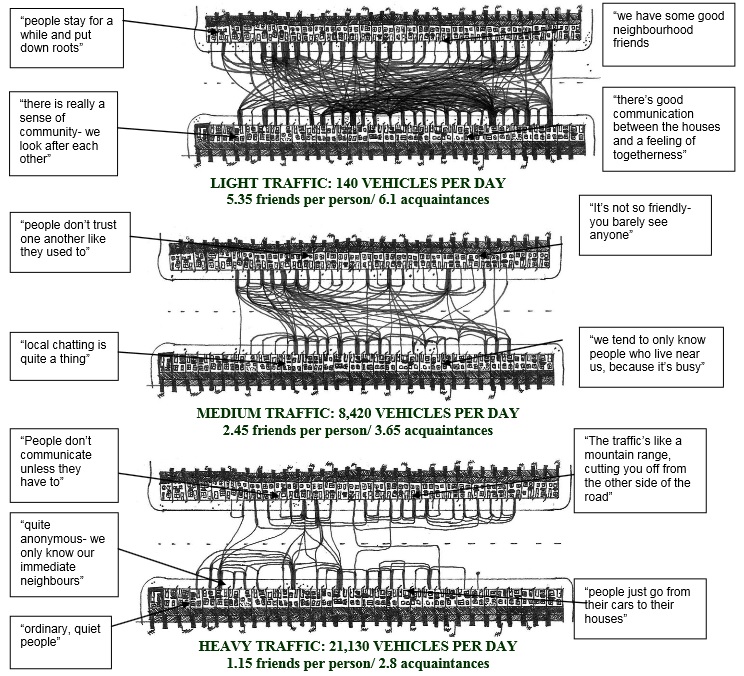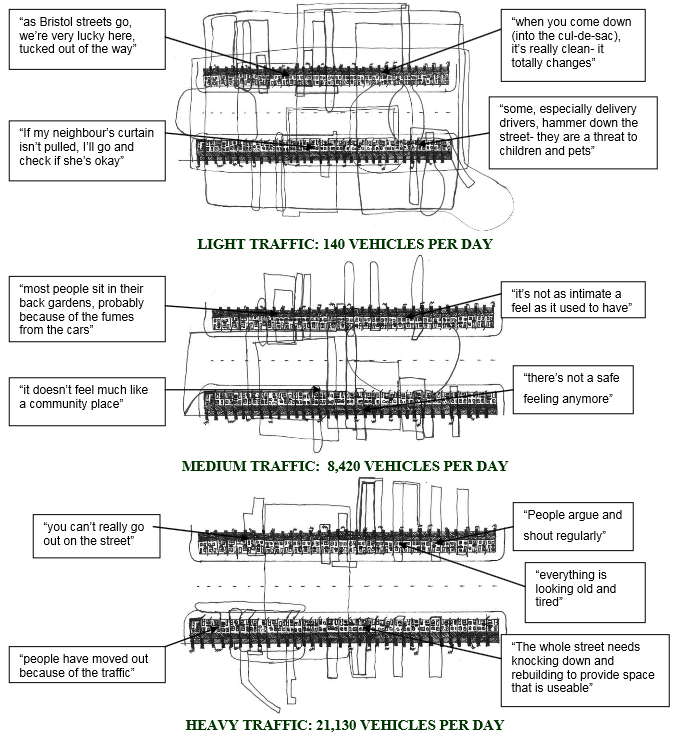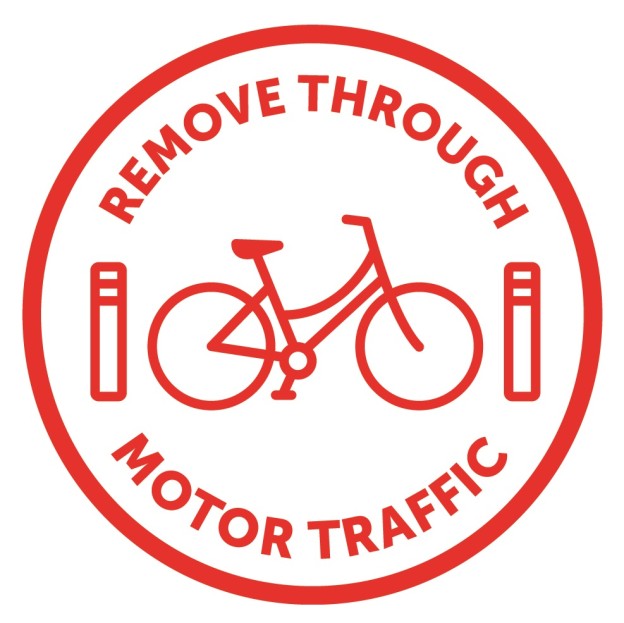“I’ve got to say- even I was startled by the degree to which car traffic is degrading ordinary people’s lives.”
Josh Hart
One of the Space for Cycling principals is the removal of through traffic. This is really important, research has shown that our communities suffer when their roads are used by high volume motor traffic.
In 1969 San Francisco Donald Appleyard “demonstrated that people living on a street with relatively heavy traffic had only one-third as many social connections as people living on a relatively light-traffic street”
When we talk about ‘Livable Streets’, this phrase was originally coined by Donald Appleyard. His work is summarised in this great video from StreetFilms.
Revisiting Donald Appleyard’s Livable Streets from STREETFILMS on Vimeo.

This study was replicated just a few years ago in Bristol;
The results confirmed that Appleyard’s findings are applicable to the UK in the 21st century; specifically that the number of friends and acquaintances reported by residents was significantly lower on streets with higher volumes of motor traffic. The extent of people’s home territories‟ also diminished as motor traffic increased.
They produced similar community interaction maps and the results are strikingly similar.

They found that “motor traffic through a neighbourhood has an inverse relationship with the number of social relationships in that neighbourhood.”
“During the interviews, residents were asked to draw their ‘home territories’. Home territory was defined as the “area over which you feel you have a sense of personal responsibility or stewardship” (Appleyard, 1981). The results confirmed Appleyard‟s findings about the relationship between traffic level and the range of home territories.”
 These two studies are linked below If you’d like to read them.
These two studies are linked below If you’d like to read them.
http://www.edra.org/sites/default/files/publications/EDRA03-Appleyard-11-2_0.pdf
http://eprints.uwe.ac.uk/15513/1/WTPP_Hart_ParkhurstJan2011prepub.pdf
A blog post by one of the authors, Josh Hart – No Friends? Blame the Traffic…

